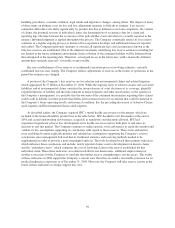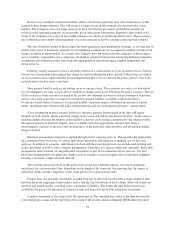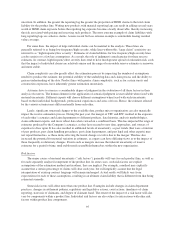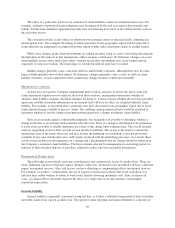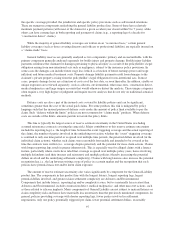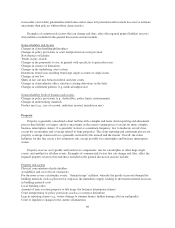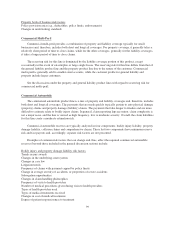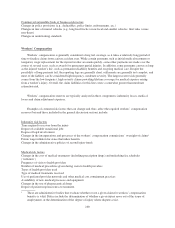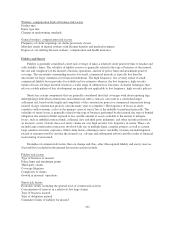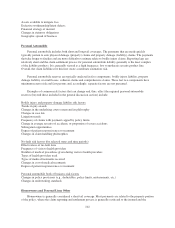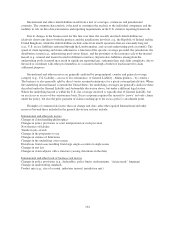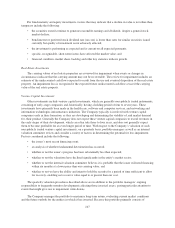Travelers 2004 Annual Report Download - page 113
Download and view the complete annual report
Please find page 113 of the 2004 Travelers annual report below. You can navigate through the pages in the report by either clicking on the pages listed below, or by using the keyword search tool below to find specific information within the annual report.
Workers’ compensation book of business risk factors
Product mix
Injury type mix
Changes in underwriting standards
General workers’ compensation risk factors
Frequency of claim reopenings on claims previously closed
Mortality trends of injured workers with lifetime benefits and medical treatment
Degree of cost shifting between workers’ compensation and health insurance
Fidelity and Surety
Fidelity is generally considered a short tail coverage. It takes a relatively short period of time to finalize and
settle fidelity claims. The volatility of fidelity reserves is generally related to the type of business of the insured,
the size and complexity of the insured’s business operations, amount of policy limit and attachment point of
coverage. The uncertainty surrounding reserves for small, commercial insureds is typically less than the
uncertainty for large commercial or financial institutions. The high frequency, low severity nature of small
commercial fidelity losses provides for stability in loss estimates whereas, the low frequency, high severity
nature of losses for large insureds results in a wider range of ultimate loss outcomes. Actuarial techniques that
rely on a stable pattern of loss development are generally not applicable to low frequency, high severity policies.
Surety has certain components that are generally considered short tail coverages with short reporting lags,
although large individual construction and commercial surety contracts can result in a somewhat longer
settlement tail, based on the length and complexity of the construction project or commercial transaction being
insured. (Large construction projects can take many years to complete.) The frequency of losses in surety
correlates with economic cycles as the primary cause of surety loss is the inability to perform financially. The
volatility of surety losses is generally related to the type of business performed by the insured, the type of bonded
obligation, the amount of limit exposed to loss and the amount of assets available to the insurer to mitigate
losses, such as unbilled contract funds, collateral, first and third party indemnity, and other security positions of
an insured’s assets. Certain classes of surety claims are very high severity, low frequency in nature. These can
include large construction contractors involved with one or multiple large, complex projects as well as certain
large commercial surety exposures. Other claim factors affecting reserve variability of surety include litigation
related to amounts owed by and due the insured (e.g., salvage and subrogation efforts) and the results of financial
restructuring of an insured.
Examples of common risk factors that can change and, thus, affect the required fidelity and surety reserves
(beyond those included in the general discussion section) include:
Fidelity risk factors
Type of business of insured
Policy limit and attachment points
Third-party claims
Coverage litigation
Complexity of claims
Growth in insureds’ operations
Surety risk factors
Economic trends, including the general level of construction activity
Concentration of reserves in a relatively few large claims
Type of business insured
Type of obligation insured
Cumulative limits of liability for insured
101



